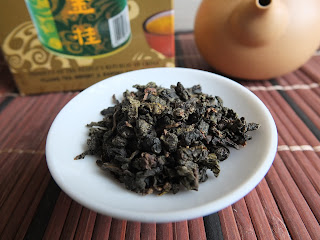"The force is strong with this one".
I am surprised with this tea. The strength of this tea caught me off guard. This 2007 raw tea cake is produced by Nan Qiao tea factory. I do not have much information on this tea factory except that it is located in the Menghai region in Yunnan, China. It was common that many owners of smaller tea factories usually learnt their tea production skills from working in the larger tea factories before they venture out forming their own tea factories.
This tea cake had been stored in hot and humid Malaysia for about 10 years. The storage of this tea is clean and dry and I could hear the 'crispiness' while I broke up a tea cake to store in my tea caddy.
This tea has bitterness with strong aromatic notes of hay and dry herbs. I only get a very faint sweetness after the tea session. I felt sweaty drinking this tea which lasted about 5 min. I must remember not to brew this tea on a hot afternoon.
But I digress. A reader emailed me wanting to drink raw pu erh and asked for recommendations. I am sure many expert readers would and can easily mention the various blends and vintages they enjoy. My concern is whether a 'newbie' can enjoy and appreciate these tea we like. I would recommend trying as many raw tea as possible. One solution might be to contact tea writers on forums and blogs...when they write something about a tea that interest you, perhaps you can write to them to sell you a sample/samples of the tea that had been reviewed. It will allow you to compare notes. More importantly, you get to make new friends and would allow you to ask questions about tea. Tea writers can be very generous. Yes, you may find the tea different in what was described, but this is the fun of drinking tea; that a cup of tea will appeal differently to tea drinkers. As for myself, I started with a few cakes and used them for comparisons before buying more. A few friends now calls me a tea hoarder. That is another story.











